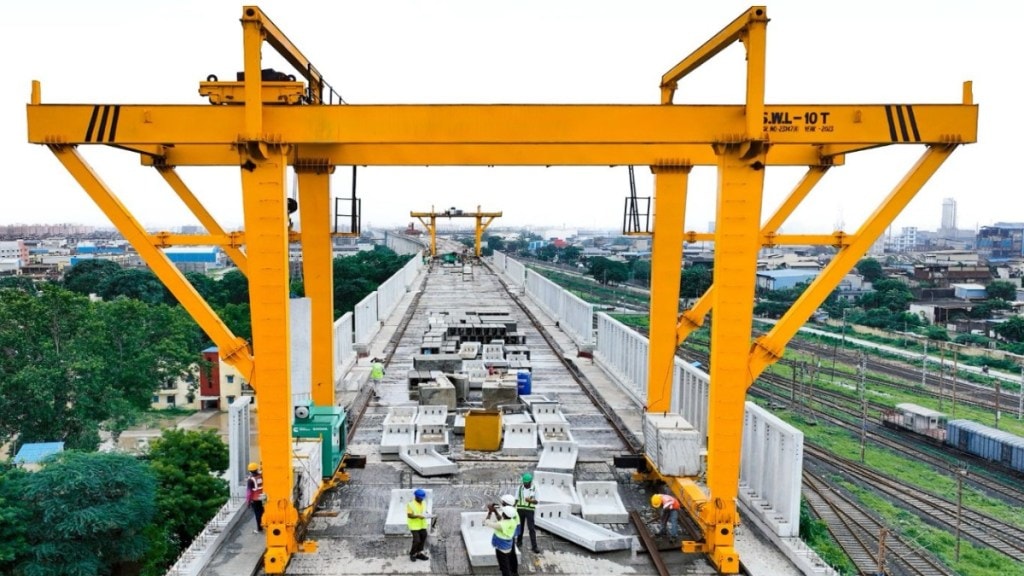Mumbai-Ahmedabad Bullet Train Progress: More than 200,000 noise barriers have been installed along the 100+ km route of the Mumbai-Ahmedabad Bullet Train, the National High Speed Rail Corporation Ltd (NHSRCL) announced on Monday. These barriers are designed to reduce operational noise while preserving the experience of stunning views from the train, ensuring a smooth and scenic journey for the passengers.
Mumbai-Ahmedabad Bullet Train: What are noise barriers and why are they being installed?
The noise barriers being installed along the Mumbai-Ahmedabad Bullet Train viaduct are based on advanced Shinkansen technology. These barriers consist of concrete panels, each 2 meters high and 1 meter wide, placed on both sides of the viaduct. The design is specifically done to address the unique challenges of high-speed rail operations.
The primary function of these noise barriers is to reduce the sound generated by the train’s high-speed movement. As the bullet train travels, it produces aerodynamic noise from the interaction between the train and the air. Additionally, sound is generated by the train’s wheels as they make contact with the tracks. The concrete panels are strategically positioned to reflect and distribute these sounds, significantly mitigating the noise levels.
These noise barriers not only aim to reduce operational sound pollution but also ensure that the scenic views along the route remain uninterrupted. By effectively managing the noise without obstructing the beautiful surroundings, the project demonstrates a careful balance between technological innovation and environmental consideration, offering a more comfortable and serene experience for passengers while minimizing disturbances for those living near the train route.
Enhanced noise barriers and train design will minimise sound impact on Mumbai-Ahmedabad High-Speed Rail
In residential and urban areas, the noise barriers along the viaduct will be taller, measuring 3 meters high. These will include a 2-meter concrete panel, with an additional 1 meter made from a clear, polycarbonate material.
The train itself is designed to minimise noise inside. Its body is made of double-skin aluminium alloy, which helps reduce the noise level inside the train.
The train’s long, sharp nose is designed to cut down on aerodynamic drag, which also helps reduce loud sounds caused by pressure waves when the train exits a tunnel.
Out of the 508 km long Mumbai-Ahmedabad High-Speed Rail (MAHSR) line, over 465 km will be elevated, running on viaducts.

